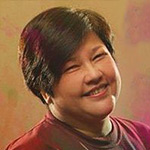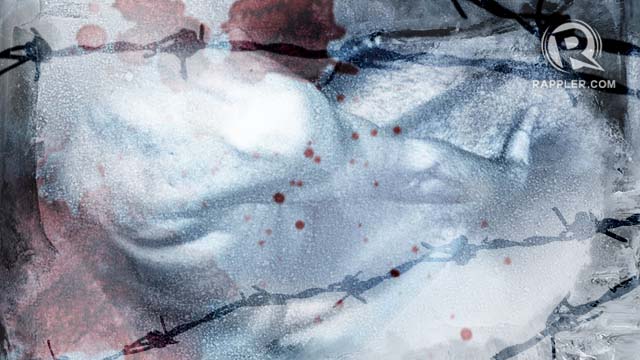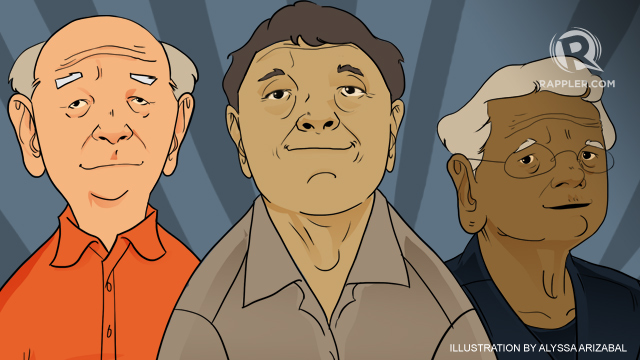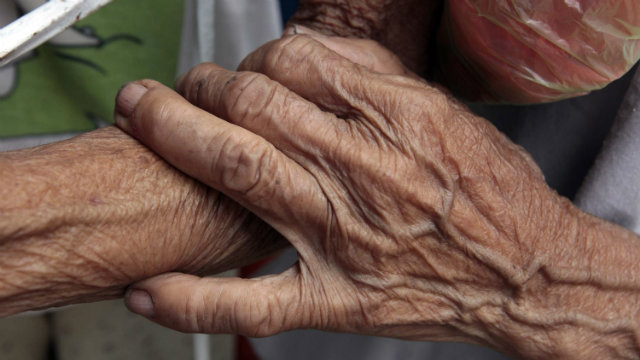 More than a decade ago, when many in this room were just beginning to consider what their sexual orientation might be or question their gender identity, feminists like myself, weary of the struggle for women’s equality, were saying, “I am so tired of doing gender, let us just do sex.”
More than a decade ago, when many in this room were just beginning to consider what their sexual orientation might be or question their gender identity, feminists like myself, weary of the struggle for women’s equality, were saying, “I am so tired of doing gender, let us just do sex.”
A longer time ago, some women woke up to the fact that they were oppressed merely because they were biologically female. They decided to do something about this and thus became feminists. The first use of the term, “feminista” in the Philippines was 115 years ago when the Asociacion Feminista Filipina was established in 1905. They proposed reforms in prisons especially on behalf of women and minors, labor reforms especially for working women, and educational reforms. They also worked to establish the first puericulture center in the Philippines and the La Liga Nacional Filipina para la Proteccion de la Primera Infancia, which to me was a precursor of our current reproductive health initiatives.
But it seems all that was not sufficiently challenging so these women also participated in a 3-decade struggle to win the right of suffrage for Filipinas which they won in 1937. Similar to our struggle for the Reproductive Health Law, they had to face down religious conservatives or macho men led by the worst of them all, religious conservatives who were also macho men.
Similarly, when the contemporary women's movement began in the 1970s it made sense that all things gender seemed like all things women. Arguments flew left and right, abetted by medical professionals that women's oppression was based on their biology. Some of these arguments have become so mainstreamed they remain today as sexist stereotypes. For example, we are told that we are less rational because of the hormonal variations that accompany our menstrual cycles. Freud, one of the most pre-eminent intellectuals of the last century stated that women also were less morally developed, were wounded and stuck at the stage of narcissism and suffered from penis envy. It was these types of arguments, for example, that rationalized the denial of women's rights to suffrage because one cannot give the vote to less moral and rational creatures.
Sociobiological arguments also rationalized the denial of access to jobs and education. It was argued that women’s distinct role in childbearing and breastfeeding made us natural caregivers which then became linked to the idea that our main purpose was to raise children and serve husbands. Our physical fragility supposedly meant that we could not take the rough and tumble competition of earning money for ourselves. Later on, women were allowed only jobs that were considered less strenuous keeping them out of large areas of the work force.
Sex and gender
The counter-arguments feminists made were therefore quite logical. They argued that sex had nothing to do with the roles men and women were assigned. That anthropological data showed that different sexes were assigned different roles in various societies. The variation across cultures was so big that one could find certain jobs made taboo for women in one society, made taboo for men in another.
The argument of the sex and gender framework is that sex is unchanging but what women and men are supposed to do (i.e. gender roles) are changeable. To empower women, it was necessary to break the socially prescribed gender barriers that kept women from enjoying equal opportunities and privileges as men. Thus, the right to vote, access to education, to jobs of all kinds, to positions in government, especially higher positions and to top management, were seen as ways by which we could break down the social prescriptions that kept women unequal.
Little wonder that feminists, the government mechanisms and laws, and the ordinary citizen tend to use women and gender interchangeably when talking about things like equality. Our omnibus law “Magna Carta of Women,” for example, calls for "gender mainstreaming" as a means of accomplishing "women's empowerment.” In fact, the law does not define "gender" but only gender equality referring to "the equality of men and women.”
Nationalists and LGBT
But the success of the women's movement, the presence of other movements like those working to end poverty and the rise of the movements of lesbian, gay, bisexual and intersex peoples have presented real challenges to our early conceptions of sex and gender.
For example, the idea that women capturing high political positions as a means or measure women's empowerment and increasing equality has been sorely tested if not disproven. Gloria Macapagal Arroyo was one of the biggest barriers to the passage of the reproductive health law. Many women in the previous Congresses were anti-RH too.
Conversely, we are finding out that men's interests diverge and converge with women's interests based on other factors. We had to wait for a male president to pass the RH law, and many of our champions for the law were men. Furthermore, while men continue to be the overwhelming perpetrators of sexual and intimate violence and women are the overwhelming victims, there are also male victims and women perpetrators.
Whereas women have always been present in other social movements such as nationalist movements, women have found that nationalists have often accused us of being Western puppets because women's rights, especially sexual and reproductive rights, are seen as inventions of the liberal West and a conduit for imperialist culture. I might add that such accusations are not just levelled at us by men making nationalist arguments but also women. On the other hand, many women and men continue to make the argument that national development cannot be achieved without progress in the status of women.
I will now finally come to the point of this conference and the reason why you asked me to address you. What then is the relationship between the women's movement and the LGBT movement? I suppose there is a connection because the LGBT movement is as equally concerned with sex and gender as the women's movement is.
But here, the already blurred framework of sex and gender becomes even fuzzier. Let me put it another way: are only lesbian and bisexual women part of the women's movement? What about transmen and women? Are transwomen, who are for the most part biologically male but identify as female, part of the women's movement? Are transmen, mostly biologically women, but who identify as men, part of the women's movement?
Many of you probably know that the acceptance of transwomen into women's organizations has caused rifts in women's movements in other countries. Even more problematically for us here, many lesbian and bisexual women have found the women's rights advocates can be dismissive or hostile to LGBT rights. Many lesbian, bisexual and transwomen do not consider themselves feminists.
Do you see now why some of us would really rather not do gender anymore and just do sex?
What is gender?
The joke is actually a reversal of what my preference has become. That is, I no longer care to do sex but prefer to do gender. (Parenthetically I will add that as a feminist I uphold the right of any person regardless of sexual orientation and gender identity to express themselves by staying single and celibate.
I of course welcome asexuals to my movement.
I hope at this point that you are wondering what gender really means. My definition of gender is a hodgepodge of other definitions I have come across, as well as a distillation of what I, as an activist, have learned.
Gender to me is a social organizing force that encompasses the domains of the biological, intrapersonal, interpersonal and social and that determines a person's access to and control of opportunities and resources. It is a system of difference and inequality that reinforces and is reinforced by other systems such as race and class, but is nonetheless distinct from these.
Taken this way, we can see how maleness and femaleness is not a distinct biological attribute that can stand apart from social interpretations. In other words while our bodies exist as physical realities we cannot really see our bodies except through eyes that have been socialized to see things a certain way. Or, as Simone de Beauvoir has said, "One is not born, but rather becomes, a woman."
My definition of gender includes why we give primordial importance to certain biological differences. In other words, gender includes both biological sex and the social relations that give meaning to the biological difference and thereby give rise to differing roles, responsibilities and privileges. Beyond that it also includes issues such as identity, sexuality. Gender is a system that creates oppressed categories such as women, lesbian, gay, bisexual, transgender and intersex. Most importantly we cannot forget that gender is a systematic force in society.
Judith Butler calls this, “the heterosexual matrix.” Society places immense importance on whether our genitalia mark as a male or female. If you are biologically female you are supposed to be attracted to a man and you are supposed to feel, look, act, behave and identify as a woman. The same is true for those whose biology classifies them as “men.” These gendered social prescriptions privilege those who fit into the category called “men” as opposed to those who fit into the category “women.” If you cannot fit into the gender prescriptions, because of your sexual orientation or your felt gender identity then you are countermanding the gender system, and are therefore penalized for your inability to conform.
If one accepts that biological sexual difference is intrinsic to gender but that gender is also intrinsic to how we understand biological sex, then the sex and gender difference becomes moot. For a feminist we need to end the gender system and that means our feminist goals are inextricably linked to LGBT liberation.
However, when I say that gender is a social organizing force, I mean it to say that I recognize there are men and women in society today as well as LGBTs. Thus, while I see the struggles are linked, I also see how the gender system has positioned women differently from LGBT peoples. Woman is a necessary part of a binary that gives meaning to the privileged gender “man”. LGBTI are categories that threaten the gender system of inequality because they disrupt the heterosexual matrix that are an important part of gender definitions of what “man” and “woman” are.
I make this distinction because while I believe that the feminist movement and the LGBT movement are sisters, they are distinct movements that must remain in coalition.
I shall end by saying that today, you have asked me to talk to you about how the women’s movement might relate to the LGBT movement. And my answer is: it is though the concept of gender and the inequalities brought about by gender. – Rappler.com
The author delivered this speech at The First Philippine Gender, Sogie and Health Conference University of the Philippines College of Medicine and One’s True Nature on September 19, 2015.
SOGIE refers to sexual orientation and gender identity and expression.

 In the news on the Lumads, with all the poverty, the killings and deaths, it’s difficult to imagine any explanation other than what is presented: the brutish military unreasonably attacking members of the New People's Army (NPA) while terrorizing sweet Lumads or forcing them to fight.
In the news on the Lumads, with all the poverty, the killings and deaths, it’s difficult to imagine any explanation other than what is presented: the brutish military unreasonably attacking members of the New People's Army (NPA) while terrorizing sweet Lumads or forcing them to fight. 

 Majority of comments on
Majority of comments on 
 As a citizen of an irreversibly globalized world, I often find myself cringing each time I watch a film that views “nationalism” as sacrosanct and endorses it. In my opinion, nationalism is like an alcoholic beverage — beneficial only when it is moderate. Too much of it can be counterproductive to the nation itself.
As a citizen of an irreversibly globalized world, I often find myself cringing each time I watch a film that views “nationalism” as sacrosanct and endorses it. In my opinion, nationalism is like an alcoholic beverage — beneficial only when it is moderate. Too much of it can be counterproductive to the nation itself. 

 Is age just a number?
Is age just a number?


 This is in response to the iSpeak article "
This is in response to the iSpeak article "


 This was originally
This was originally 
 How unfortunate that even now, some people still look at Muslims with discrimination and hate in their eyes. After all these years, little has changed.
How unfortunate that even now, some people still look at Muslims with discrimination and hate in their eyes. After all these years, little has changed.

 The Philippine military has repeatedly stood aside while paramilitary forces have attacked indigenous villages and schools in the southern region of Mindanao. These forces have committed killings, torture, forced displacement, and harassment of residents, students, and educators with impunity.
The Philippine military has repeatedly stood aside while paramilitary forces have attacked indigenous villages and schools in the southern region of Mindanao. These forces have committed killings, torture, forced displacement, and harassment of residents, students, and educators with impunity.




 Often when I teach Philippine Government or Introduction to Political Science classes, especially for Political Science majors, I'd ask my students to do one rather time-consuming classroom exercise.
Often when I teach Philippine Government or Introduction to Political Science classes, especially for Political Science majors, I'd ask my students to do one rather time-consuming classroom exercise. 
 I have never dreamed of becoming a nurse. When I was a child, my eager soul was claiming to be a renowned doctor. This vision would sometimes be replaced by thoughts of becoming a scientist, a Nobel Prize-winning author, or a rock star. I have never wanted to become a nurse until I became one.
I have never dreamed of becoming a nurse. When I was a child, my eager soul was claiming to be a renowned doctor. This vision would sometimes be replaced by thoughts of becoming a scientist, a Nobel Prize-winning author, or a rock star. I have never wanted to become a nurse until I became one.
 It’s official. The
It’s official. The 


 If there is a question that symbolizes the culmination of our so-called Philippine-style democracy, it is this: Nagalaw pa ba iyan (Is he still alive)? It’s a line from the film
If there is a question that symbolizes the culmination of our so-called Philippine-style democracy, it is this: Nagalaw pa ba iyan (Is he still alive)? It’s a line from the film 